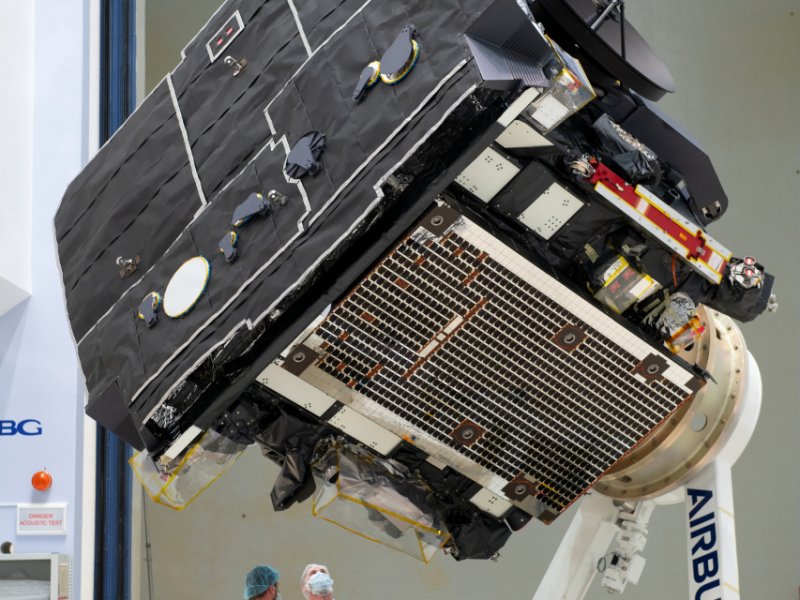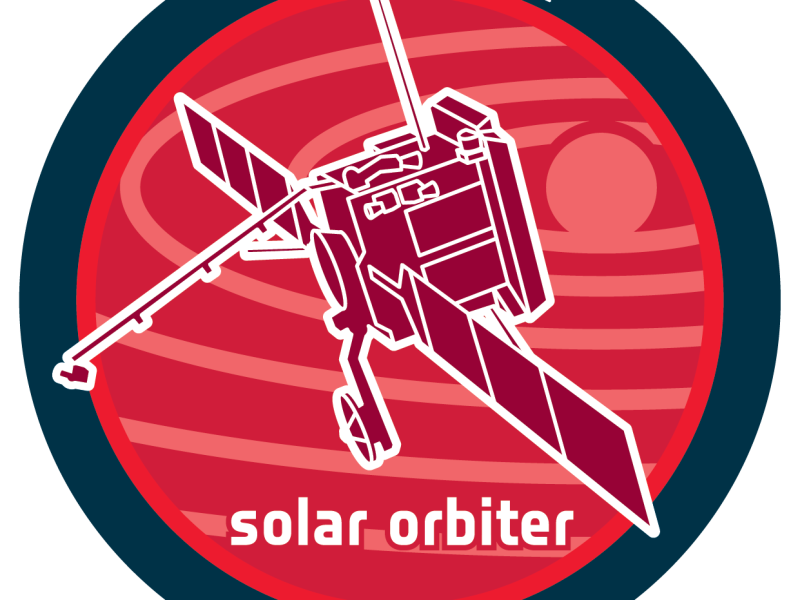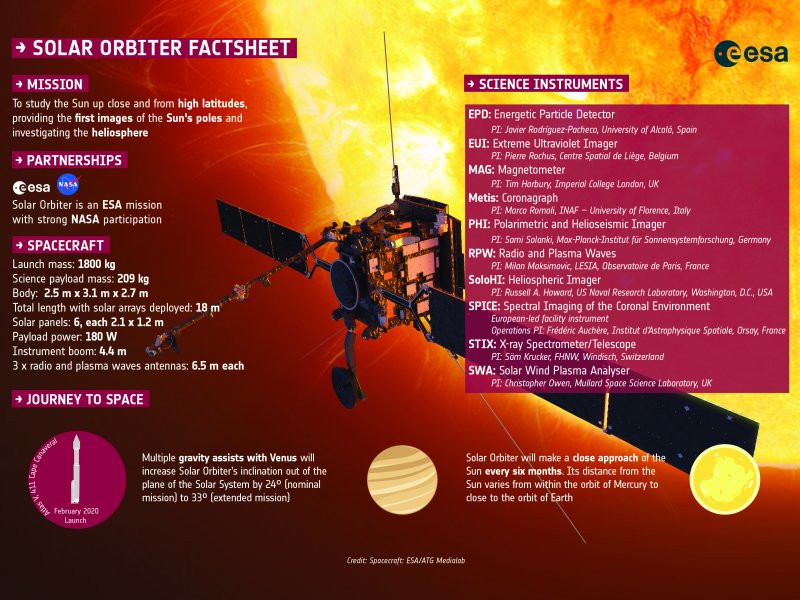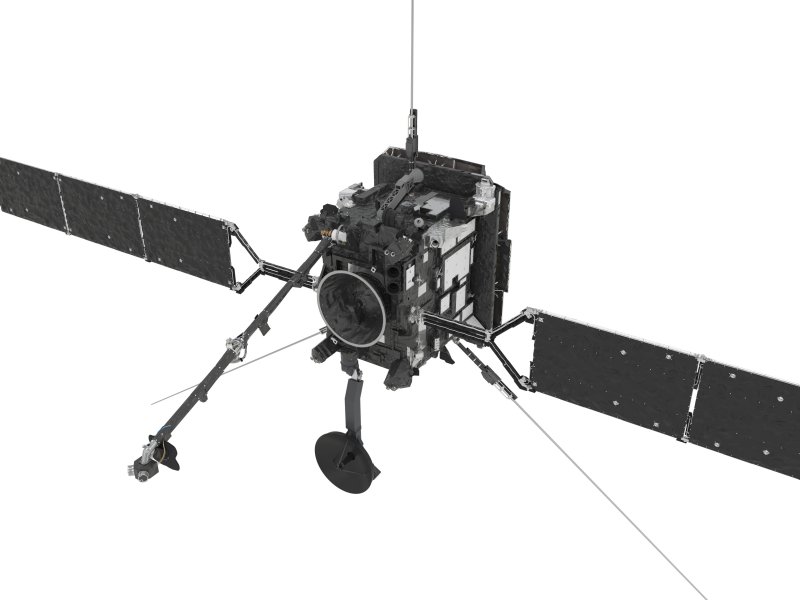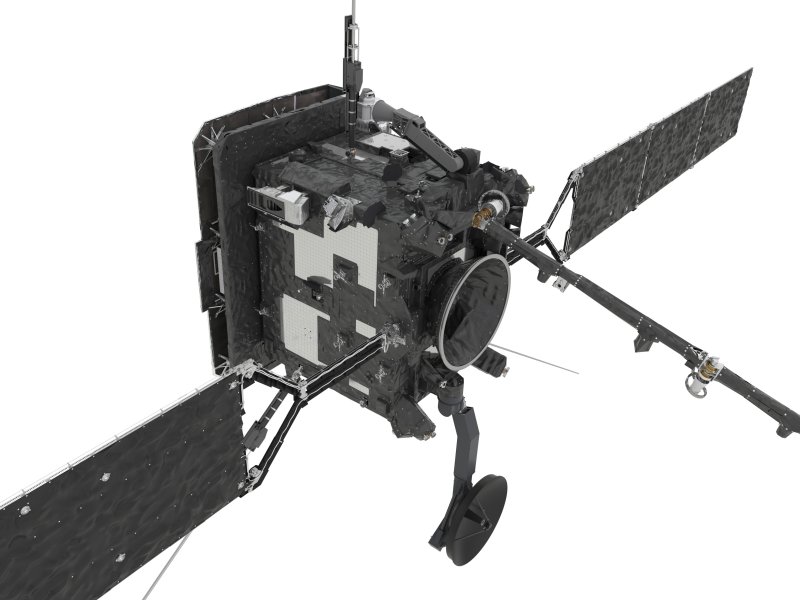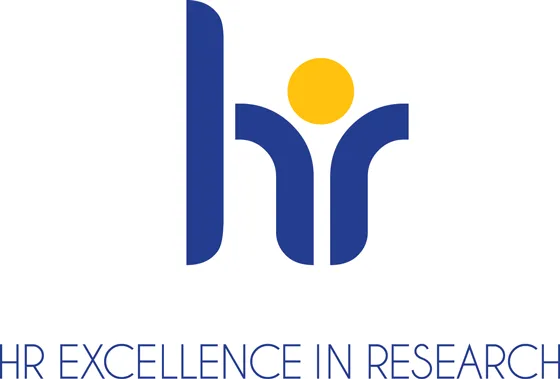ESA Solar Orbiter probe is ready to leave for Cape Canaveral

The European spacecraft has successfully passed last tests at the IABG test centre near Munich. Electronics from Charles University, Faculty of Mathematics and Physics, is also on-board. During oncoming weeks the spacecraft will be transported to Cape Canaveral in Florida, US, to be launched towards the Sun in February 2020.
Solar Orbiter – the joint ESA/NASA collaboration project is the first M-class mission of the Cosmic Vision 2015-2025 programme. Scientists from Charles University, Faculty of Mathematics and Physics, have been involved in development of electronics for one of the scientific instruments.
Solar Orbiter launch is scheduled on February 6th, 2020 from Cape Canaveral in Florida, US. The Atlas V rocket launcher will lift the spacecraft for a several year journey to the Sun vicinity. The spacecraft is equipped with a state-of-the-art suite of instruments performing comprehensive in-situ measurements of electric and magnetic fields, plasma, and energetic particles in the solar wind as well as remote-sensing observations using spectral imagers and coronagraphs to study processes in the Sun atmosphere in a wide range of wavelengths – from visual to x-ray spectra. The scientific goals addressed by Solar Orbiter are covered by the four top-level scientific questions together with three key targeted sub-questions:
- How and where do the solar wind plasma and magnetic field originate in the
corona?
- What are the source regions of the solar wind and heliospheric magnetic field?
- What mechanisms heat and accelerate the solar wind?
- What are the sources of solar wind turbulence and how does it evolve?
- How do solar transients drive heliospheric variability?
- How do CMEs evolve through the corona and inner heliosphere?
- How do CMEs contribute to solar magnetic flux and helicity balance?
- How and where do shocks form in the corona?
- How do solar eruptions produce energetic particle radiation that fills the
heliosphere?
- How and where are energetic particles accelerated at the Sun?
- How are energetic particles released from their sources and distributed in space and time?
- What are the seed populations for energetic particles?
- How does the solar dynamo work and drive connections between the Sun and the
heliosphere?
- How is magnetic flux transported to and re-processed at high solar latitudes?
- What are the properties of the magnetic field at high solar latitudes?
- Are there separate dynamo processes acting in the Sun?
Solar Orbiter is expected to gain several primacies – for the first time simultaneous in-situ measurements and remote-sensing observations will be taken from a distance of only 0.28 astronomical units (42 million kilometres, i.e., within the Mercury orbit). At its closest approach to the Sun, it will co-rotate with the solar surface below and thus it will stay for a relatively long period above the same solar region enabling a detail study of processes occurring there. After a series of gravity-assisted manoeuvres during repetitive Venus and Earth fly-byes, Solar Orbiter will gradually enter the out-of-ecliptic orbit, which will enable investigations of processes occurring in high-latitude solar regions, including first imaging of the solar poles. During the whole mission Solar Orbiter will coordinate its observations with the NASA Parker Solar Probe that was launched on August 12th, 2018. It has already completed three perihelion approaches, finally to reach 10 solar radii (6.5 million kilometres) distance from the solar surface.
The Solar Orbiter spacecraft, completed by Airbus DS in the United Kingdom, has undergone a series of thorough examinations at the IABG test centre during the last year. E.g., it was tested in the thermal vacuum chamber with the solar heat flux simulator; it has passed vibration tests, measurements of the spacecraft magnetic residuals in compensated Earth’s magnetic field, electromagnetic compatibility tests in an anechoic chamber etc. Deployment of solar panels, antennas, and booms has been also verified. At the same time scientific instruments have passed comprehensive functional tests, last non-conformances have been sorted out, and the most recent versions of their flight software have been uploaded.
Meanwhile, scientific instrument teams in cooperation with ESA experts and spacecraft operators have focused on preparation of the first operations after the spacecraft launch – instrument commissioning, initial flight testing and calibration, or scheduling of instrument measurement and telemetry modes along the anticipated spacecraft trajectory during the first year. While continuous in-situ measurements are supposed to begin during the 2nd Q of 2020, detail regular remote observations will start no earlier than in 2022 when Solar Orbiter will enter the nominal operational phase.
All scientific data shall be open to a general scientific community from ESA server archives after three months. The Space Physics Group of the Department of Surface and Plasma Physics, MFF UK, participated in the development of electronics for the Proton and Alpha Particle Sensor (PAS) of the Solar Wind Analyser (SWA) suit. Its members will gain a priority access to the latest data soon after their reception by ground telemetric stations. Scientists and doctoral students will take part in the instrument monitoring and in-flight calibration with their own software. They will search for important events and perform regular data inspection before the data are released to public. We plan announcement of several doctoral, master, and bachelor thesis topics aiming to processing and interpretation of data from this important international scientific project in future years.
The Space Physics Group belongs to the Department of Surface and Plasma Science, Faculty of Mathematics and Physics, Charles University. Its scientific research is oriented to experimental investigations of the space plasma and dust environment providing design and development of space plasma instruments and diagnostic methods for solar wind, magnetospheric, and ionospheric international research projects. The research is predominantly focused on Sun-Earth relationships and space weather by studying parameters of plasma, charged particles, and waves mainly in the solar wind and its discontinuities (incl. interplanetary shocks), and related processes in the Earth's magnetosphere. Further research areas are investigations of the turbulence and electromagnetic waves in the geospace and laboratory simulations of dust charging in space.
Project leader: Doc. RNDr. Lubomír Přech, Dr.
Address: MFF UK, V Holešovičkách 2, 180 00 Praha 8, Czech Republic
Email: lubomir.prech@mff.cuni.cz
Tisková zpráva
Cover illustration: ESA/ATG media lab


